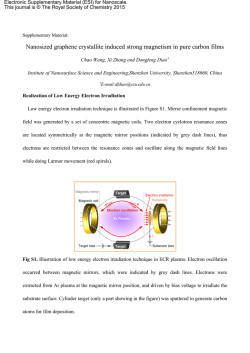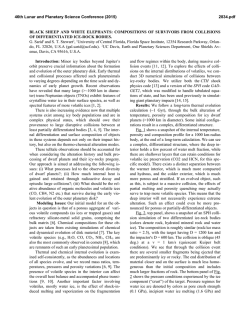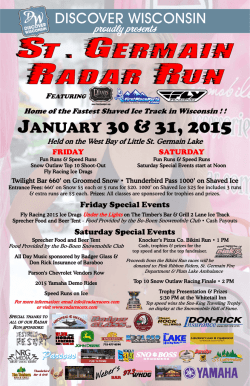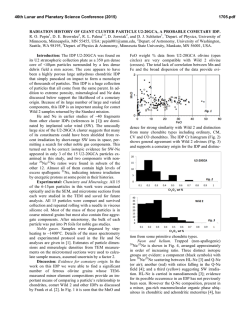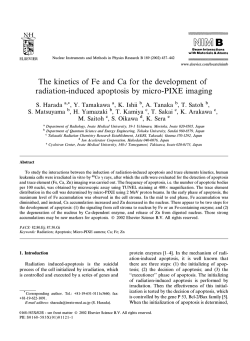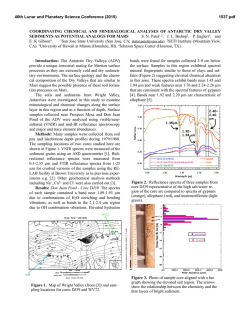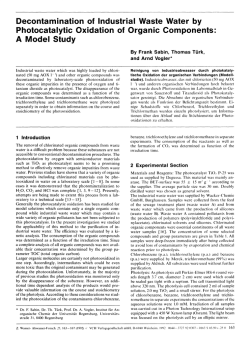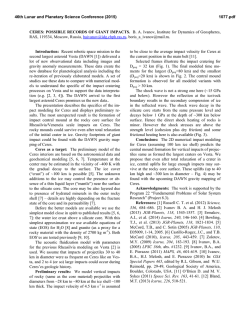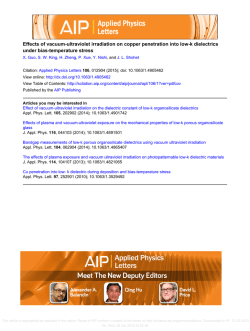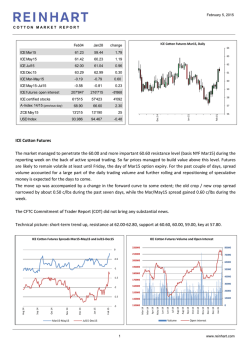
The Colors of Irradiated Mixed Ices and Application to the Trojan
46th Lunar and Planetary Science Conference (2015) 2265.pdf The Colors of Irradiated Mixed Ices and Application to the Trojan Asteroids. Michael J Poston1,2, Jordana Blacksberg2, Mike Brown1, Elizabeth Carey2, Robert Carlson2, Bethany Ehlmann1,2, John Eiler1, Kevin Hand2, Robert Hodyss2, and Ahmed Mahjoub2. (1California Institute of Technology, Pasadena, CA. 2Jet Propulsion Laboratory, California Institute of Technology, Pasadena, CA. [email protected].) Introduction: The Trojan asteroids escort Jupiter in its orbit, dwelling at the L4 and L5 Lagrange points. These asteroids have not been visited by spacecraft from Earth, but are of high priority to the planetary science community, having been ranked as one of the five possible targets of a New Frontiers class mission in the current decadal survey. Understanding the history of the Trojan asteroids is expected to help constrain models of solar system formation and dynamical evolution. Information about Trojan surfaces comes primarily from telescopic observations. One observable is the slope of the spectra of reflected sunlight in the visible and near infrared ranges of the spectrum, often called the “color” of the asteroid. Emery et al. [1] observed the color of the Trojans and found a bimodal distribution consistent with two, well-mixed populations. Brown et al. [2] reviewed observations of Centaur and Kuiper Belt Objects (KBOs). Both Centaurs and KBOs appear to also have a bimodal distribution of colors, though the sample sizes are not as robust as for the Trojans. Numerous laboratory simulations have been conducted examining the chemical behavior of pure and mixed ices under irradiation (for example, see Hudson [3] and references therein), however, few studies have considered the color in the visible and near infrared. One study that did consider color [4] showed for the pure ices of methanol, methane, and benzene that there was reddening of the spectral slope when irradiated with ions of hundreds of keV energy. Each hydrocarbon reddened at a different rate and with a different shape to its spectrum. In the case of methane, the visible slope first reddens, then decreases slightly upon continued irradiation. Brown et al. [2] hypothesized that the bimodal color distributions may reflect a difference in formation location of each of the color groupings. Differences in the chemical and elemental species present in a body are expected with temperature (i.e. distance from the Sun). A condensed species is stable against thermal loss for some characteristic time when beyond its “ice line”, but is unstable at smaller orbital radii. Thus, differences in formation location can result in differences in color if the two groups span the ice line of a key chemical species that promotes or suppresses „reddening‟. We are currently testing this idea with laboratory simulations of irradiation weathering of mixed ices. Methods and Materials: Laboratory simulations are being carried out in the Minos chamber at the Icy Worlds Simulation Laboratory at NASA‟s Jet Propulsion Laboratory. The Minos chamber is a high vacuum system with typical pressures in the high 10-9 torr range. Spectra are collected in the visible and near infrared range (~0.5 to 1.7 um) with an Acton grating spectrometer using separate visible and near infrared detectors and gratings. Spectra for chemical identification are also collected in the mid-IR with a Midac FTIR spectrometer. Spectrometers are at a 22 degree incidence and collection angle from the normal to the substrate surface. Desorbed neutral species in the vacuum chamber are observed throughout the experiment by a Stanford Research Systems quadruple mass spectrometer collecting from mass 2 to 100 m/z, with unit mass resolution. Pure and mixed ices of water (H2O), methanol (CH3OH), ammonia (NH3), and hydrogen sulfide (H2S) are deposited at 50 K on either a gold mirror or a diffuse aluminum target. These ices are seen in comets and are sufficient to cover the likely elemental constituents of icy primitive bodies. The resulting ice layer is estimated to be a few micrometers in thickness. After deposition, the ices are irradiated for about 20 hours at 50 K with a beam of 10 keV electrons (measured current about 0.5 µAmps). The ices are then warmed (while continuing irradiation) at a rate of 0.5 K/min to 120 K and held there for one hour before ending the irradiation. This process is intended to simulate a likely history for an object that forms beyond the present orbit of Neptune 46th Lunar and Planetary Science Conference (2015) and eventually drifts inward to the orbit of Jupiter. After irradiation, data collection continues as the samples are warmed from 120 to 300 K at 0.5 K/min. Preliminary Results: Several pure and mixed ice irradiation experiments have already been conducted, including: water; methanol; a 3:3:3:1 mixture of H2S: NH3: CH3OH: H2O; and a 3:3:1 mixture of NH3: CH3OH: H2O. We observe complex behavior in the spectral slopes for these ices over the course of the experiments. All samples showed some reddening upon irradiation, however, some appeared to reach a maximum slope and then decrease in redness with further irradiation dose, similar to the behavior shown for methane ice under ion irradiation by Brunetto et al. [4]. Sample spectra for one such ice – methanol – are shown in Figure 1. Upon irradiation there was a greater decrease in reflection at short wavelengths, leading to a red slope, until the reflection at short wavelengths reached a stable value. The longer wavelengths continued to decrease in reflectance even after the reflectance at short wavelengths stabilized, reducing the redness. Most samples showed an increase in spectral slope during heating to 120 Kelvin and only the water ice did not leave a refractory residue upon heating to 300 K. The chemical and/or physical mechanism(s) responsible for the trends in spectral slope with irradiation and temperature are under investigation, but are not yet determined. References: [1] Emery J. P. et al. (2011) AJ, 141, 25, 18. [2] Brown M. E. et al. (2011) ApJL, 739, L60. [3] Hudson, R. L. et al. (2008) in The Solar System Beyond Neptune, ed. M. A. Barucci et al. (Tucson, AZ: Univ. Arizona Press), 507. [4] Brunetto, R. et al. (2006) ApJ, 644, 646. 2265.pdf Figure 1: Sample plot from our experiments showing the trends in apparent reflectance of methanol ice on a gold mirror substrate during irradiation. The top spectrum is immediately before irradiation and spectra proceed to lower reflectance with continued irradiation (from top to bottom). This work has been supported by the Keck Institute for Space Studies (KISS). The research described here was carried out at the Jet Propulsion Laboratory, Caltech, under a contract with the National Aeronautics and Space Administration (NASA) and at the Caltech Division of Geological and Planetary Sciences.
© Copyright 2025
